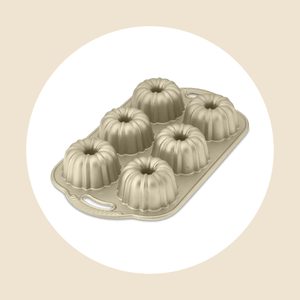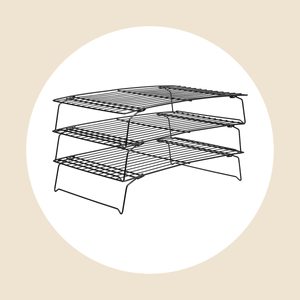The only thing better than a regular Bundt cake is a mini Bundt cake. We share our best tips and tricks so your minis come out perfectly every time.
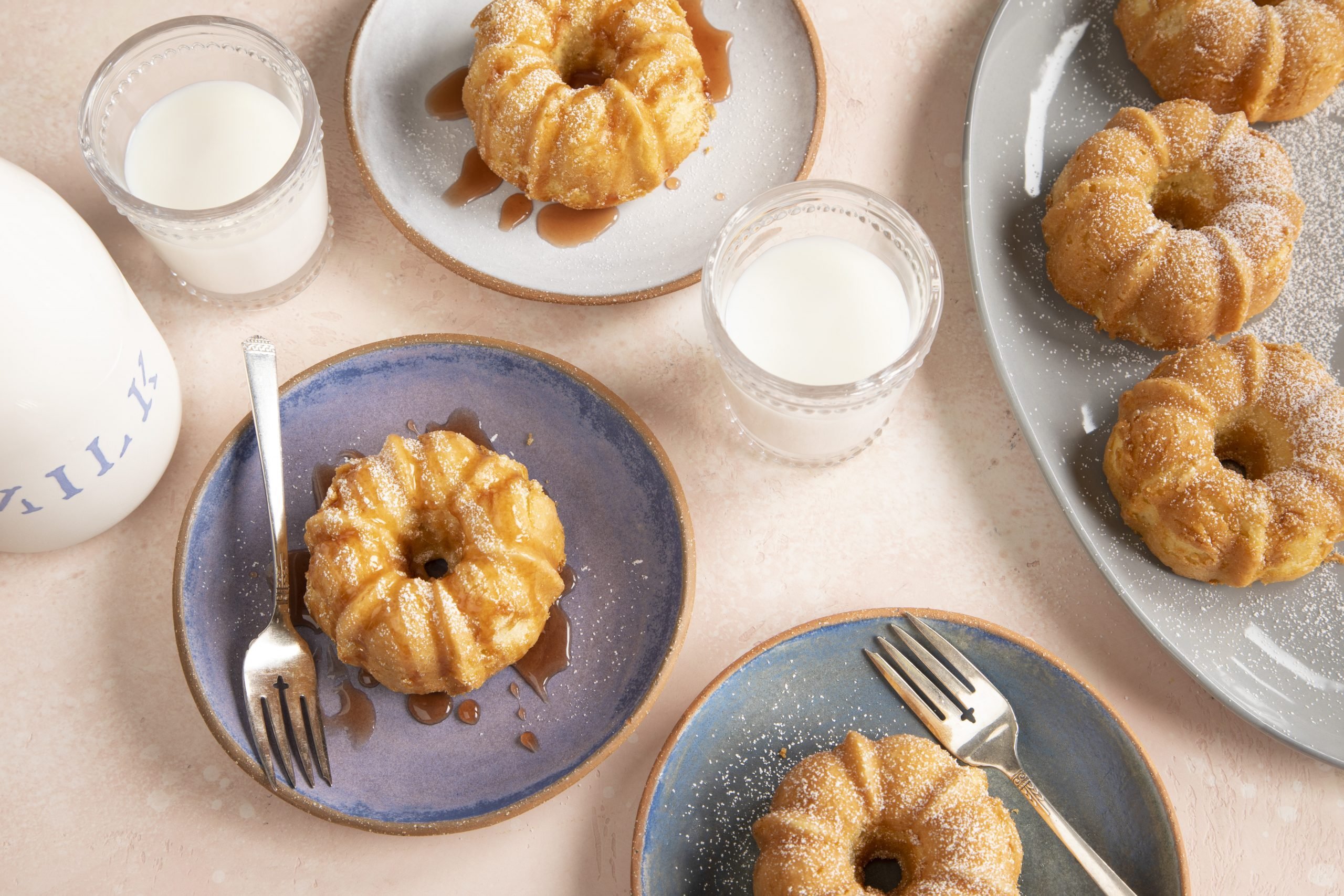
How to Make the Cutest Mini Bundt Cakes

Bundt cakes are the perfect combination of elegance and ease. With a little work on the front end (read: greasing your Bundt pan correctly), you’ll have a cake that’s beautiful as soon as you pop it out of the pan. And the same goes for mini Bundt cakes—they offer all of the same draws, but just in smaller (and admittedly, cuter) packages. Follow along to learn all of our tips and tricks for making delightful mini Bundt cakes.
How to Make Mini Bundt Cakes
We followed this buttermilk pound cake recipe when making our mini Bundt cakes. Using 1/2 cup of batter for each mold, the recipe yields 13 mini Bundts.
Tools You’ll Need
- Mini Bundt Cake Pan: A simple metal mini Bundt cake pan like this one is a great choice when making mini Bundts for the first time.
- Silicone Spatula: A silicone spatula will give you the most control when you’re turning the cake batter into each mold.
- Cooling Rack: A cooling rack is an essential tool when removing the mini Bundts from the pan.
Our Test Kitchen prefers baking mini Bundt cakes in a metal pan (instead of silicone molds). Once you master baking mini Bundts in pans with less ridges and details, you can “graduate” to more intricate molds. Find more of our picks for the best Bundt pans, and learn more about how to choose the right Bundt pan for you.
Ingredients
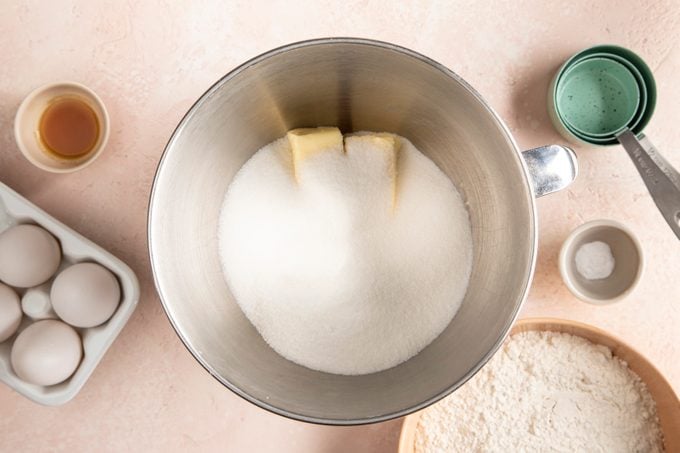
- 1 cup butter, softened
- 2-1/2 cups sugar
- 4 large eggs, room temperature
- 1 teaspoon vanilla extract
- 3 cups all-purpose flour
- 1/4 teaspoon baking soda
- 1 cup buttermilk
- Confectioners’ sugar, optional
Directions
Step 1: Cream butter and sugar
Preheat the oven to 350°F. Then, in a large bowl, cream the butter and sugar until light and fluffy, about 5 to 7 minutes.
Step 2: Add the eggs and vanilla
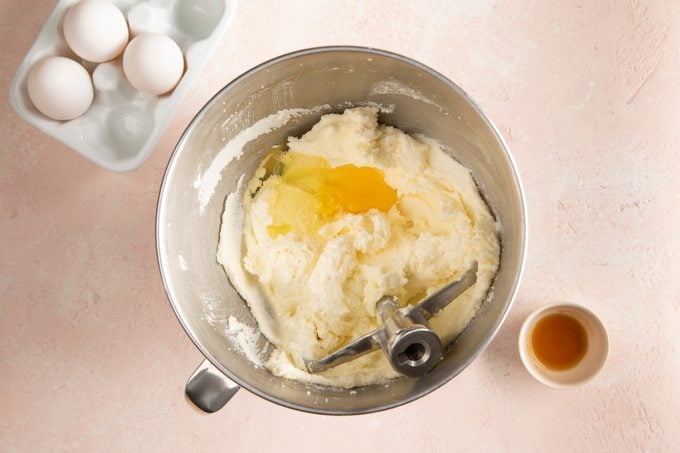
Add the eggs, one at a time, beating well after each addition. Once all the eggs are mixed in, add the vanilla.
Step 3: Combine the dry ingredients
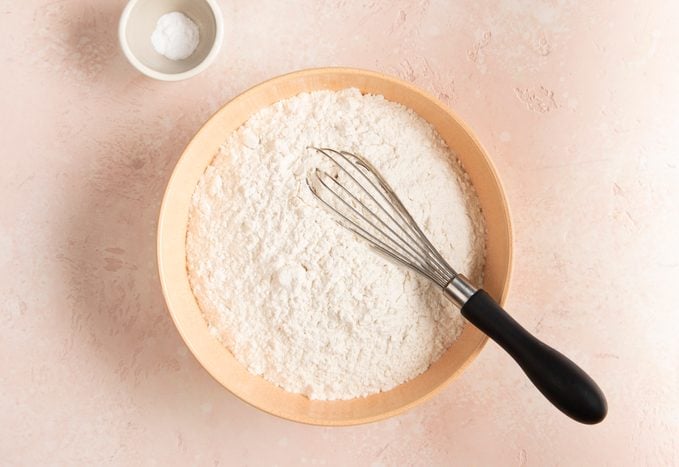
Combine the flour and baking soda in a large mixing bowl.
Step 4: Alternate adding the buttermilk and dry ingredients
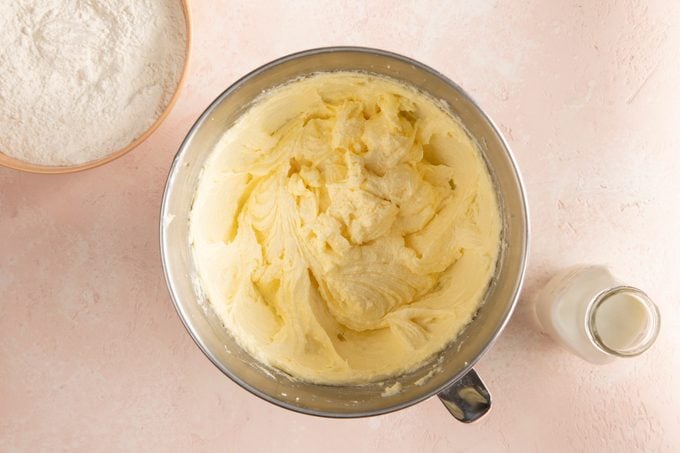
Take turns adding the buttermilk and flour mixture into the Bundt cake batter.
It’s important that you don’t add everything at once here. If you want some more guidance, try adding 1/3 of the flour mixture, then 1/2 of the buttermilk, another 1/3 of the flour mixture, the rest of the buttermilk, and finally the rest of the flour mixture, beating well after each addition without overmixing.
Step 5: Grease the mini Bundt cake pan
Greasing the mini Bundt cake molds is one of the most important parts of making mini Bundt cakes. It’s the key to helping the cakes release from the molds without cracking or crumbling later on.
Fold a sheet of paper towel, dip it in the vegetable shortening, and spread it around each of the mini Bundt cake molds, making sure it gets into every nook and cranny.
Then, dust each mold with flour. Pick up the pan, and tap and rotate it to make sure the flour is coated evenly. When you’ve floured each mold, hold the mini Bundt cake pan over the sink and turn it upside down and tap the bottom to get rid of any excess flour.
For more tips, read our guide on how to grease a Bundt pan.
Step 6: Add the batter to the molds
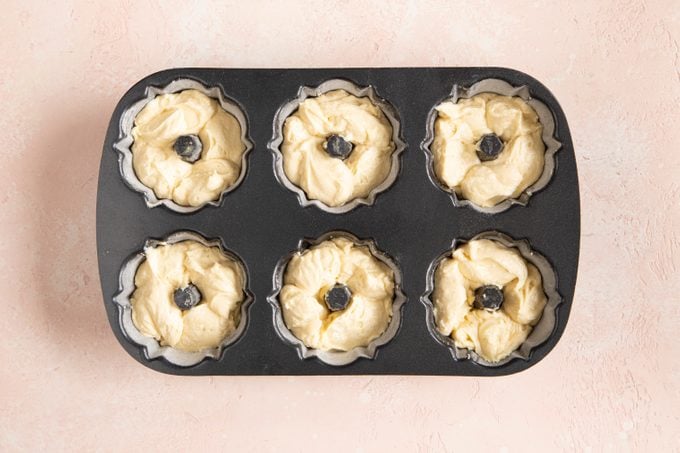
Use a measuring cup to measure about 1/2 cup of batter for each mold. A small rubber spatula is the easiest tool to help get the batter in each one evenly.
Step 7: Bake the mini Bundt cakes
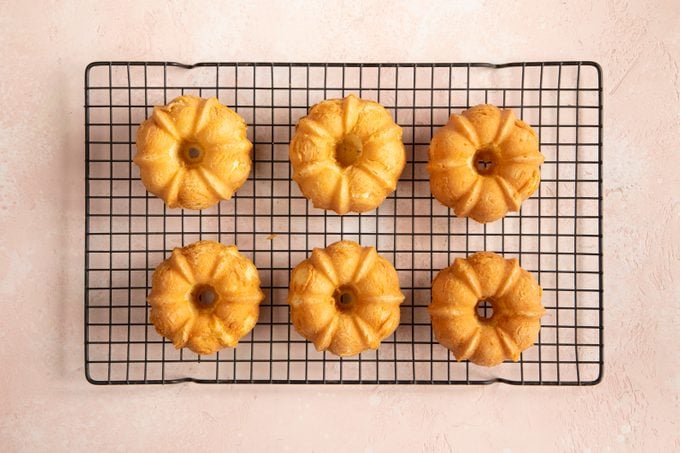
After you finish filling each mold, the mini Bundt cakes should take about 20 to 25 minutes to bake. They should be golden when they’re ready to come out of the oven, but you can test them with the cake doneness test to see if a toothpick comes out clean, too.
Let them cool in the pan for 15 minutes before moving to a wire rack to cool completely.
Step 8: Dust with confectioners’ sugar and serve!
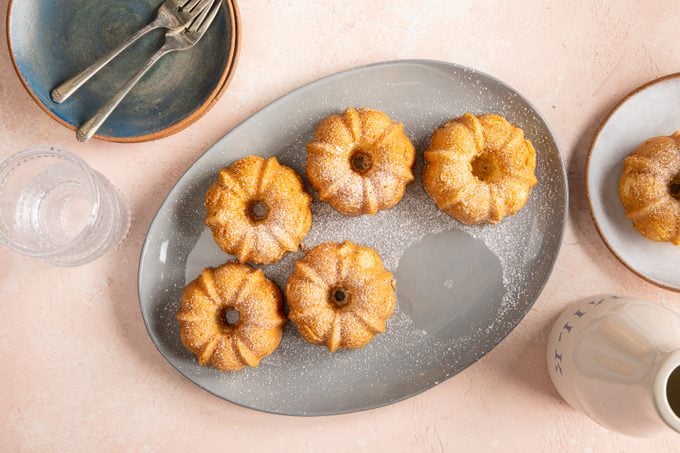
After you pop the mini Bundt cakes out of the molds, dust them with confectioners’ sugar before serving. They’re beautiful enough where they don’t need much more for decoration!
Tips for Making Mini Bundt Cakes
How can you convert a full-sized Bundt cake recipe to mini Bundt cakes?
You should be able to convert most full-sized Bundt cake recipes to minis. When you’re using a mini Bundt cake pan that has 6 molds, using 1/2 cup batter in each mold is a good place to start—although you may have to make some adjustments depending on how much the cake rises, and what kind of cake it is (whether it’s a pound cake, coffee cake or box mix).
If you’re using a pan that has more or less than 6 cakes—like this braided mini cakelet pan or this Nordic Ware Bundt charm pan—you’ll have to adjust the amount of batter you use in each mold accordingly.
What can you do if the mini Bundt cakes are stuck to the pan?
Mini Bundt cakes break and crumble more easily than larger Bundts do (although regularly sized Bundts can be finnicky too!). Your best bet is to make sure to grease and flour the molds properly before filling them with batter. Otherwise, don’t be afraid to turn crumbled mini Bundt cakes into a trifle—it will be just as yummy.
Here are more Bundt cake tips to keep in mind as you go.
How can you decorate mini Bundt cakes?
While a sprinkling of confectioners’ sugar is enough to decorate mini Bundts, you can also choose to drizzle icing or ganache on top of each cake if you want to take them to the next level. Otherwise, serving with fresh whipped cream or piping cream cheese frosting on each would do the trick.
Check out our guide to how to frost Bundt cakes for more tips and inspiration.
What other kinds of mini Bundt cakes can you make?
You can make any kind of mini Bundt you like! A few ideas include mini chocolate Bundts and mini pumpkin Bundts that are perfect fall.





















